Guimarães
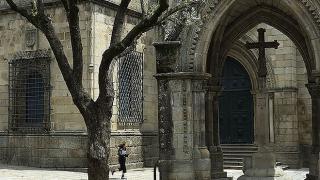
Don't miss
- discover the City Park
- in the outlying districts, Take a walk along the various marked footpaths and visit the Citânia de Briteiros
Guimarães is considered the birthplace of Portugal because Afonso Henriques, who went on to be the first king of Portugal, was born here.
The historical centre in the area that was within the Guimarães city walls, is associated with the formation and identity of Portugal, and was classified a World Heritage site based on the originality and authenticity applied in its restoration. The city still has a harmonious, well-preserved heritage that is evident in the graceful iron verandas, granite balconies and porticos, mansions, arches connecting the narrow streets, paving slabs smoothed by time, towers and cloisters. For a moment you might imagine yourself to be in a mediaeval setting, where the nobility built their houses over time, such as the Mota Prego house, the Vila Flor and Toural palaces, and the many others that give Guimarães its unique atmosphere.
You can start from the heart of the city, Largo da Oliveira, where you find the Padrão do Saladoand the Collegiate Church of Nossa Senhora da Oliveira, which houses the valuable Alberto Sampaio Museum. Passing the Paços Municipais (City Hall), crowned with battlements, enter the Praça de Santiago which in the Middle Ages welcomed pilgrims bound for Compostela, just as today it welcomes residents and tourists in its restaurants and terraces. The Convent of Santa Clara, the Casa do Arco and other stately houses are in Rua da Santa Maria, which links with the upper city.
Go up this street or the Avenida Alberto Sampaio, bordered by the remains of the ancient wall that continues into the upper city, between the Palace of the Dukes of Bragança and the castle. On your way to the castle at the top, you will find this palace, a 15th century monument in which it is possible to see the influence of French seigneurial architecture, the Monument to King Afonso Henriques, the Romanesque Chapel of S. Miguel and finally the Castle, which dates back to the 10th century and is closely linked to the foundation of Portugal.
Castelo de Guimarães © Direção Cultural da Região Norte
But you must also discover another central point in Guimarães, so go back down to the Largo do Toural, with its 16th century fountain. Rua D. João I, which in the Middle Ages was the road to take to Porto, boasts old houses with wooden balustrades and 17th century facades. Skirting the Church of the Convent of S. Domingos, now in Rua de Paio Galvão, you will find the neo-Romanesque Martins Sarmento Archaeological Museum, which extends into the cloister of the Convent. Just ahead is the old market hall building, which today houses the José de Guimarães International Arts Centre, with a retrospective of the work of this renowned artist, who was born in the city.
A little further away from the city centre, the cascading gardens with Summer Houses and rocaille decoration, at the Vila Flor Palace and Cultural Centre, are well worth a visit; as is the Baroque Church of Nossa Senhora da Consolação e dos Santos Passos at the far end of Largo da República do Brasil.
For another view of the city you can go up in the cable car to Monte da Penha, to enjoy one of the most beautiful panoramas in the north of Portugal, where you will find the Shrine of Our Lady of Penha.








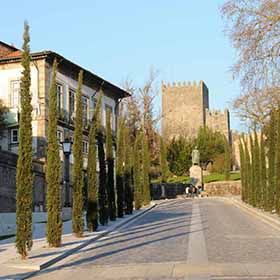
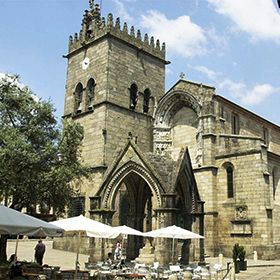
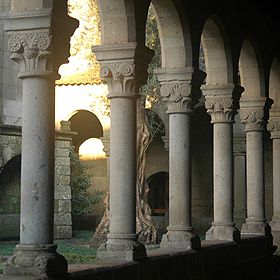
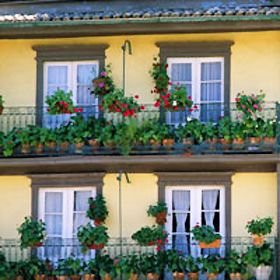
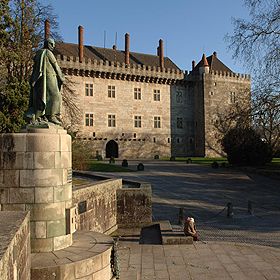
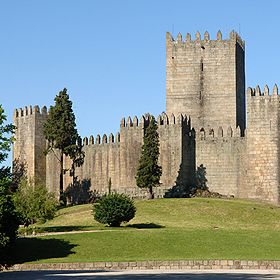

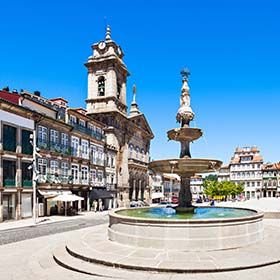

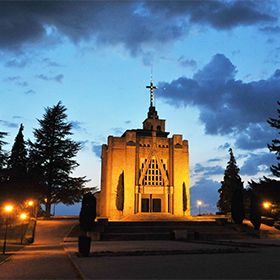
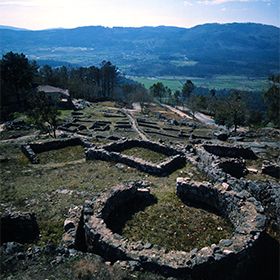
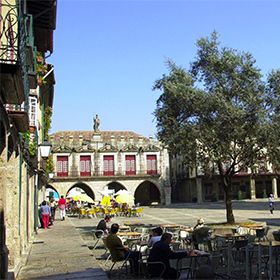


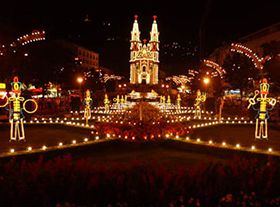
 Explore
Explore 


 Remember and Share
Remember and Share 


